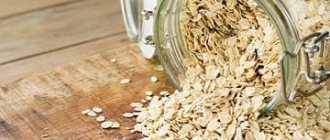For the first six months, a baby needs only three things to ensure health and carefreeness. Love. Heat, both human and climatic. And mother's milk. And if the latter, in exceptional cases, can be replaced with special mixtures, then the first two points are absolutely irreplaceable.
However, the baby is growing, his body is adapting to the outside world, from which it is impossible to fence him off, even by creating the most greenhouse conditions, and there is no point in doing so. The necessary enzymes are formed in the gastrointestinal tract of a newborn, and in order to improve them and perform well, it is necessary to introduce complementary foods. At first it will be hypoallergenic juices, cereals, fruits and vegetables, but by 7-8 months there will be a need for meat products.
The benefits of meat puree
Meat puree in a jar
With mother's milk, the child receives all microelements and vitamins. But by and large, this is the necessary minimum, allowing only to launch vital mechanisms inside a small organism. And these mechanisms should be constantly stimulated. Therefore, products that contain groups of vitamins and microelements that are absent or poorly represented in mother’s milk are introduced into the menu of a six-month-old child.
Meat is in fourth place in terms of complementary feeding time. First, as already mentioned, there are juices, cereals, vegetables and fruits. However, you cannot do without meat, despite all the assurances of vegetarians. After all, it contains:
- protein.
- animal fats.
- calcium.
- phosphorus.
- potassium.
And many other useful substances.
Meat contributes to:
- strengthening bones and cartilage tissue.
- improves the functioning of the gastrointestinal tract.
- increases hemoglobin and forms red blood cells.
- strengthens the nervous system.
- increases appetite.
- gives a boost of energy.
- improves the quality of heat transfer.
The benefits are undeniable and giving up all of the above, even if you replace it with other products, is absolutely impractical, and in some cases even dangerous for the baby.
What is the benefit of meat?
Of course, animal fats are extremely necessary for the child’s body, as they can provide a sufficient amount of iron, phosphorus, and calcium.
The main beneficial functions inherent in meat:
- participation in the process of formation of red blood cells, increasing hemoglobin levels;
- strengthening the state of the nervous system;
- significant improvement in the functioning of the stomach and intestines;
- appetite stimulation;
- ensuring the baby’s strong growth, healthy and harmonious development;
- promoting overall bone strengthening.
When to start
Transition to complementary foods
As already mentioned, meat is in fourth place in the series of complementary foods. Therefore, the best option would be to start introducing it into the child’s diet at the age of 9-10 months. By this time, the digestive system has already been somewhat hardened from the juices, vegetables, fruits and cereals introduced in the first place and is quite capable of coping with a heavier and richer product.
However, there are several reasons why you should start feeding your baby a little earlier. There are only three of them:
- lack of B vitamins.
- decreased hemoglobin.
- the baby is not gaining weight.
In these cases, the timing is shifted forward by a couple of months, and complementary feeding with meat puree is carried out with even greater precautions.
Rules for introducing meat puree into the diet
- Firstly, you should make sure that the child is healthy, at least two weeks have passed since the introduction of the previous complementary foods and no vaccinations have been given for the same period.
- In extreme heat, meat should not be included in complementary foods.
- It is better to give meat puree at lunch, so until the evening you can track the newborn’s reaction to the new product.
- Each time the puree should be freshly prepared and warm.
- Puree can be made only from meat or with the addition of vegetables that have already been introduced into the baby’s complementary foods, and to which he had a positive reaction.
- The first portion should be no more than ½ teaspoon.
- If the child does not have any negative reaction, next time you can increase the portion to a whole spoon.
- Give puree no more than 1-2 times a week, gradually increasing both the portion and the frequency of complementary foods.
It can be noted that this is practically no different from introducing other foods into a newborn’s complementary feeding, so this should not cause any difficulties, even for inexperienced mothers.
Optimal age for complementary meat feeding
Pediatricians are divided on this issue. Some believe that meat puree for a baby can be prepared from 4 months old, adding vegetable broth to it. The rest are sure that this is still a heavy food for babies of this age; the best time to introduce meat to meat is 8–9 months. Experts have developed a national program for Russians aimed at rationally distributing the microelements children need across months. They decided that the special need for protein, potassium, iron, phosphorus and magnesium arises precisely at 8-9 months. Only with the receipt of these substances will the child’s body develop harmoniously.
Store-bought or homemade puree
Feeding homemade meat puree
Most manufacturers of children's products undergo very strict examination and licensing. And it is right. But even the most trusted brand of puree may not suit your baby. This does not depend on the quality, but on the fact that in addition to meat, it may contain other components, the combination of which your baby simply will not like. You can experiment with other jars, but it will take an indefinite period of time, and the child needs to eat well tomorrow. So if you have the opportunity to buy good, fresh meat, it is better to prepare the puree yourself. There will no longer be any fear that something wrong was put in it.
Which meat is healthier for baby food?
How to cook meat for children under one year old. To prepare meat dishes for baby food, only the freshest meat is used, which must be cleaned of fat and films, without adding salt and spices during heat treatment. Only after reaching 1-1.5 years can you start adding a little salt to food, adding vegetable or butter to it, and using fresh herbs.
But the question is not how to properly purchase a piece of meat, but which product to choose, and where to start feeding your baby? Let's try to understand this issue together in detail.
Choosing the right meat
Meat selection
The first thing you need to remember before going to the meat department of a store or to a familiar seller at the market is that a newborn needs dietary meat. Pork, of course, is more saturated with fats and other microelements, but for a six-month-old child this will be too much of a burden. Chicken can cause allergies. What remains is rabbit, turkey and beef. The latter is contraindicated in children with lactase deficiency.
- And now the choice of the best piece:
- Uniform and even color. The veins should only be white.
- When pressed with your finger, the dent on quality meat will disappear almost instantly.
- The smell should be pleasant and fresh.
- It is worth blotting the meat with a paper napkin. If there are colored traces left on it, the meat contains unwanted dyes.
- The piece should be without fat.
- The meat has not been frozen.
If all these rules are followed, then you can be sure that you have chosen good meat, and it will only bring benefits to your little one.
How to choose meat for your baby?
The health and well-being of your child depends on the choice of quality products, so this issue must be approached with full responsibility. Moreover, you need to choose meat carefully, since this product is fraught with many dangers and its wrong choice can lead to very unpleasant consequences.
Which meat is better?
First, let's decide what is best to buy. In supermarkets you can find many different products, including exotic venison and wild boar, but what is suitable for babies?
- It is better to start feeding meat with rabbit and beef (veal). This is the least fatty meat, it is easier to digest for a child accustomed to plant and dairy foods. But if the baby has lactase deficiency or an allergy to cow protein, beef is not suitable as complementary food.
- Next, you can offer the baby chicken. If your child has allergies, replace chicken with turkey.
- Pork is quite fatty, so you should wait a few months and only then introduce it into the children's diet.
- Last but not least, nutritionists recommend introducing lamb.
Rules for choosing good meat
Nowadays it is difficult to find environmentally friendly meat - all animals are raised on artificial feed and antibiotics. But it's worth trying to find the best option. The following tips will help with this.
- The color of the meat should be even and uniform: red for beef, pink for pork. The veins should have a white, not yellow tint.
- If you press down on a good piece with your finger, the dent will disappear almost immediately.
- Smell the meat. A quality product should have a fresh, pleasant smell.
- Touch the napkin to the piece. If the product stains the paper, it means it contains dyes.
- For baby purees, choose tender, lean parts without fat.
- Avoid meat that has been frozen several times. Only pieces that have been frozen no more than twice are suitable for complementary feeding.
Useful: Three stages of weight loss while breastfeeding
How to make meat puree
Features of preparing meat puree
First, three basic rules that a young mother must learn so that she can do this automatically:
- The selected piece of meat should be rinsed very thoroughly with running water and cleaned of veins and fat.
- Any spices are absolutely unacceptable, including salt.
- A meat grinder and blender will not give the desired homogeneity, so you need to grind the meat through a sieve.
If you have mastered these simple but important rules, you can start cooking.
As already mentioned, rinse a small piece of meat thoroughly, put it in a saucepan in which you cook only for the child and fill it with cold water.
Bring to a boil, wait a few minutes and drain the water. The first broth will remove all remaining fat and extractive substances that can complicate digestion.
Rinse the meat thoroughly again, add water and cook for at least an hour.
Cut the cooked meat into small pieces, grind in a blender and rub through a strainer until smooth.
To make the puree take on the consistency of porridge, you can add vegetable broth. By no means meat.
You can add vegetable puree from those products that your baby is already accustomed to.
It is allowed to add vegetable oil.
There are no difficulties, and the three nuances mentioned above are quite easy to remember. But it would be nice to mention a couple of recipes for making meat puree.
Turkey Meat Puree Recipe
There are only two ingredients: 100 grams of turkey fillet and 0.5 cups of water.
Cook in a saucepan on the stove according to the instructions above. But if you have a slow cooker, then you should cook the meat on a wire rack in the “steam” mode for 40 minutes.
Turkey puree can be a little dry, so adding a few drops of vegetable oil is necessary in this recipe.
Beef puree recipe
40 grams of beef or veal. Water. A teaspoon of butter.
Simmer the meat, cut into small pieces, in a small amount of water for 2 hours.
The cooked meat must be cooled and then either minced twice in a meat grinder or chopped in a blender, and then rubbed through a strainer.
Place back into the saucepan, add a little vegetable broth and bring to a boil.
Add butter and stir thoroughly.
Instead of vegetable broth, you can add breast milk. In this case, you can no longer boil.
A couple more subtleties
- The puree should be prepared for one time only.
- It is not recommended to refreeze defrosted meat. Sharp and repeated changes in temperature are good for the proliferation of all kinds of bacteria.
- If the baby reacted poorly to the first attempt at complementary feeding, this does not mean that meat should be abandoned completely. It's worth waiting a week and a half and trying again.
Well-prepared meat puree, made at home from a quality product, is wonderful nutrition for any baby. Of course, it is much easier to buy something already prepared in the store, but the loving and caring hands of the mother will prepare it in such a way that the baby will definitely feel that he is loved.
Review of popular brands of baby puree
If you don’t trust homemade meat puree, or you don’t have time to cook it yourself, you can buy ready-made puree for your baby from well-known manufacturers.
- "Subject"
This is an inexpensive puree of relatively low quality. In addition to meat and vegetables, the composition includes milk powder, fat, cereals, and salt. This is not very good, since the fewer components complementary foods include, the better.
- Hipp
A German brand that produces products approved by pediatricians in several countries. This complementary food contains many beneficial microelements. However, the composition includes onions, therefore, the product can only be consumed by babies who have reached the age of 8 months.
- "Agusha"
Complementary foods are sold in a metal can, and this scares off many parents. Nevertheless, Agusha’s products are of quite high quality and also inexpensive.
- Gerber
Despite the fact that many parents love this company and are happy to feed their infants with its products, its biography is not so clean. The manufacturer treats the animal meat from which the puree is made with chlorine, which, of course, negatively affects the quality of the product.
- "Granny's Basket"
High-quality and reliable domestic products. Rice flour was introduced into the composition as a thickener, rather than starch, which is much healthier.
- "Frutonyanya"
Many parents choose this puree, as it is inexpensive and quite famous. The composition contains vegetable oils, water, starch. Due to the latter content, the product has a rather thick consistency, which not all kids will like.
Rabbit with carrots
Rabbit meat is a dietary dish, considered very tender and suitable for first feeding. It is low-fat and low-calorie.
Required Products:
- 100 grams of meat, peeled from films;
- 1 medium carrot;
- 4 tbsp. l. cow's or breast milk;
- butter - on the tip of a teaspoon;
- salt - even less.
The rabbit meat must be washed, films and veins removed, cut into small pieces and placed in a glass pan. Add bottled purified water to cover the meat and put on fire. Such tender meat cooks quickly; half an hour or 35 minutes will be enough.
The carrots need to be peeled, rinsed thoroughly and boiled in a separate bowl for at least 15 minutes. After this, the boiled products must cool naturally, only then can they be blended into a fine puree with a blender. At the end, add milk, a little butter and salt.
The consistency of the baby’s meat puree according to the recipe should correspond to thick sour cream and be homogeneous, without lumps, so that the baby does not choke while eating. When feeding, the baby must be placed in a highchair in a sitting position. You need to give the puree from a teaspoon, taking a little at a time. The next spoon is offered after the child has swallowed the contents of the first. If the baby cries and refuses to accept a new product, then do not rush, put the puree in the refrigerator and try giving it later, heating it in a water bath.
What is important to know!
You already understand how to prepare meat puree for a child. However, you need to know the rules for feeding your baby meat.
- You cannot add salt or any spices when cooking or grinding the product. Salt is added at later stages. In this regard, it is better to consult with the pediatrician who is observing the child.
- To prepare each meat puree, only freshly prepared meat is used.
- A child should not buy frozen food that cannot be carefully inspected to determine its freshness.
- Store the puree in the refrigerator for no more than a day.
- Minced meat is diluted with breast milk, milk porridges or mixtures, and vegetable purees. Most often, meat products are mixed with potatoes, broccoli, cauliflower or carrots, which are boiled and ground in a separate container.
Let's take a closer look at several of the most popular recipes for making meat purees for children from 6 months.











